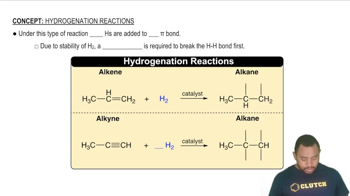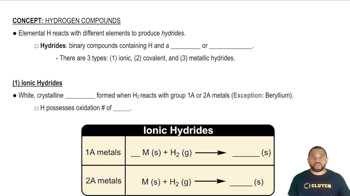Here are the essential concepts you must grasp in order to answer the question correctly.
Hydrogen Ion (H+)
H+ represents a hydrogen ion, which is a proton that has lost its electron. In this form, hydrogen carries a positive charge and is often found in acids or ionic compounds. Understanding when hydrogen exists as H+ is crucial for analyzing the acidity or basicity of a compound.
Recommended video:
Hydride Ion (H-)
H- is known as a hydride ion, which occurs when hydrogen gains an extra electron, resulting in a negative charge. This form of hydrogen is typically found in ionic compounds with metals, where it acts as a reducing agent. Recognizing the presence of H- is important for understanding the reactivity and bonding in certain compounds.
Recommended video:
Covalently Bound Hydrogen (H)
Covalently bound hydrogen refers to hydrogen atoms that are bonded to other atoms through covalent bonds, sharing electrons. This is the most common form of hydrogen in organic and inorganic molecules, where it contributes to the molecular structure and properties. Identifying covalently bound hydrogen is essential for understanding molecular geometry and reactivity.
Recommended video:
 Verified step by step guidance
Verified step by step guidance

